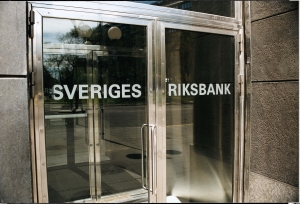S&P: Swedish covereds resilient even if house prices fall by 30%
Jan 9th, 2015
Swedish house prices could fall in 2015 against a backdrop of stricter amortisation requirements and Europe’s deteriorating economic outlook, but Swedish covered bond ratings would likely prove resilient even if prices fell by 30%, Standard & Poor’s said yesterday (Wednesday).
 While the ongoing increase in Swedish house prices could continue this year — in Q3 2014 nominal house prices were more than 20% higher than in 2007 — S&P noted that, according to the OECD, house price-to-income ratios indicate a current overvaluation by 21.6% above the long term average price-to-income ratio. The rating agency said that the house price appreciation is “exaggerated”.
While the ongoing increase in Swedish house prices could continue this year — in Q3 2014 nominal house prices were more than 20% higher than in 2007 — S&P noted that, according to the OECD, house price-to-income ratios indicate a current overvaluation by 21.6% above the long term average price-to-income ratio. The rating agency said that the house price appreciation is “exaggerated”.
The Swedish central bank has warned on the high prices and S&P said that against a backdrop of moves regarding regulatory requirements for mortgage loan amortisation and Europe’s weak economy, a correction could be building up, with Swedish house prices eventually falling to align with the long term average.
“The magnitude of any reversion of house prices to a stable level in the long term will depend on the pace of interest rate increases, housing supply, as well as changes in amortization patterns, tax laws, consumer expectations, or unemployment,” said the rating agency.
However, having tested the impacts of various house price decline scenarios on the covered bond programmes of three Swedish banks — Swedbank Hypotek, Nordea Hypotek and Länsförsäkringar Hypotek — S&P said its Swedish covered bond ratings would likely remain stable.
Without changing any other elements of its rating analysis, the agency reduced the most recent property valuations of the residential pools backing the three programmes by 10%, 20%, and 30%.
The lower valuation scenarios increase weighted-average LTV ratios and, in turn, weighted-average foreclosure frequency and weighted-average loss severity, according to S&P.
The impact on potential losses on the pools would result in higher target enhancement levels, with target overcollateralisation commensurate with a triple-A rating in the most severe scenario increasing by an average of 13.4 percentage points to 29.7%, for example. But S&P said that even in this case nominal overcollateralisation remains sufficient for all the programmes it tested.
The rating agency noted that available eligible assets for overcollateralisation could be below that necessary to support current ratings, but said it believes that issuers would replace ineligible assets with eligible assets if available, or that the ineligible assets would remain in the cover pool for the benefit of covered bond investors.
“We therefore consider that there is sufficient cushion between the cover pools’ available and target overcollateralisation levels to allow the Swedish covered bond programs that we rate to withstand a decline of up to 30% in house prices without suffering a downgrade,” said S&P.








